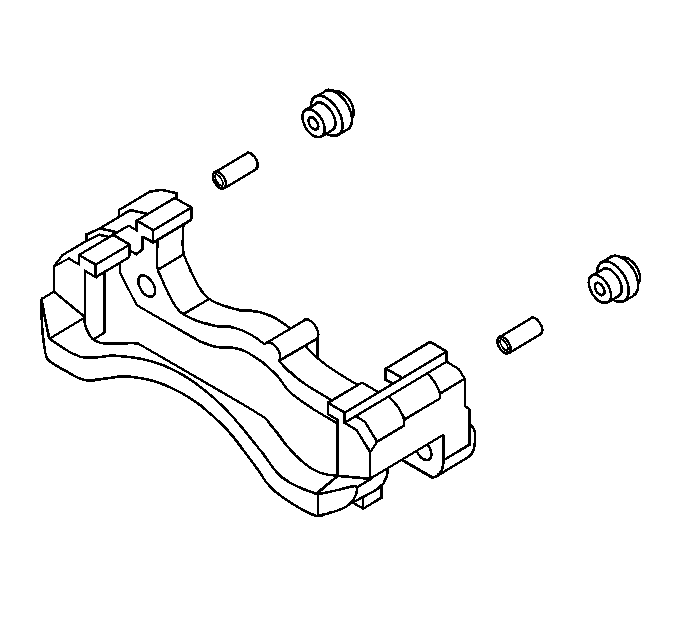For 1990-2009 cars only
Removal Procedure
- Remove 2/3 of the brake fluid from the master cylinder.
- Raise and support the vehicle. Refer to Lifting and Jacking the Vehicle in General Information.
- Remove the tire and wheel assembly. Refer to Tire and Wheel Removal and Installation in Tires and Wheels.
- Inspect the caliper operation. Refer to Brake Caliper Inspection .
- Remove the caliper. Refer to Rear Brake Caliper Replacement .
- Remove the caliper bracket bolts.
- Remove the caliper bracket from the mounting plate.
- Inspect the caliper and the caliper bracket. Refer to Brake Caliper Inspection .

Installation Procedure
- Install the caliper bracket to the mounting plate.
- Install the caliper bracket bolts.
- Install the caliper. Refer to Rear Brake Caliper Replacement .
- Install the tire and wheel assembly. Refer to Tire and Wheel Removal and Installation in Tires and Wheels.
- Remove the safety stands.
- Lower the vehicle.
- With the engine OFF, gradually apply the brake pedal to approximately 2/3 of its travel distance.
- Slowly release the brake pedal.
- Wait 15 seconds, then repeat steps 6-7 until a firm brake pedal is obtained. This will properly seat the brake caliper pistons and brake pads.
- Fill the brake master cylinder to the proper level. Refer to Master Cylinder Reservoir Filling in Hydraulic Brakes.

Notice: Use the correct fastener in the correct location. Replacement fasteners must be the correct part number for that application. Fasteners requiring replacement or fasteners requiring the use of thread locking compound or sealant are identified in the service procedure. Do not use paints, lubricants, or corrosion inhibitors on fasteners or fastener joint surfaces unless specified. These coatings affect fastener torque and joint clamping force and may damage the fastener. Use the correct tightening sequence and specifications when installing fasteners in order to avoid damage to parts and systems.
Tighten
Tighten the caliper bracket bolts to 70 N·m (52 lb ft).
